HTC Sensation 4G Review - A Sensational Smartphone
by Brian Klug on July 1, 2011 12:38 AM EST- Posted in
- Smartphones
- HTC
- Android
- Mobile
- HTC Sensation
- MSM8260
The biggest difference for me however is resolution. I was initially skeptical about qHD purely because it isn’t really a default or “blessed” resolution in the Android developer guidelines. In terms of PPI, the Sensation (and all qHD 4.3” screens) are at 256 pixels per inch, and 4.3” WVGA (800x480) is at 217 pixels per inch. In addition, the aspect ratio is a true 16:9 on qHD as opposed to being a bit more square at WVGA. It’s up to individual developers to make sure their applications are PPI agnostic, and for the most part individual applications do a good job.
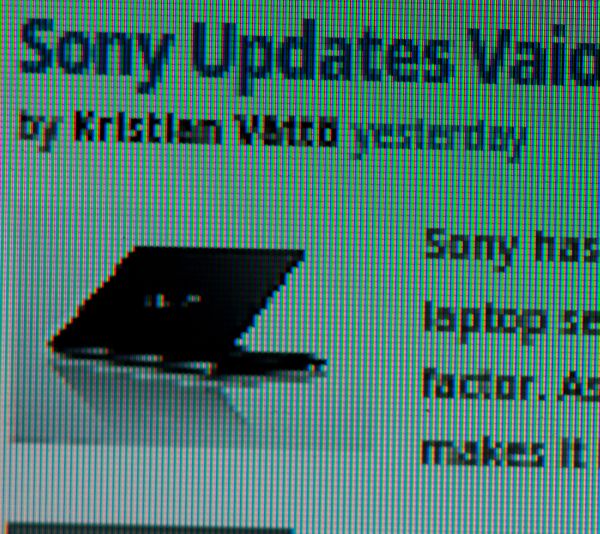
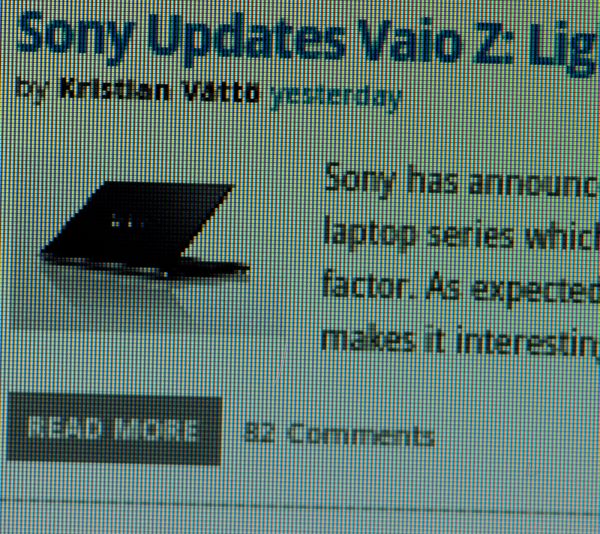
Same Magnification Images of Samsung Infuse (Left - WVGA 4.5"), HTC Sensation (Right - qHD 4.3")
Most high profile titles are agnostic enough to utilize the full 960x540 resolution. Twitter for example uses the entire display canvas, same with Angry Birds. One place where I was definitely appreciated that extra resolution was running remote desktop sessions using Xtralogic's RDP client.
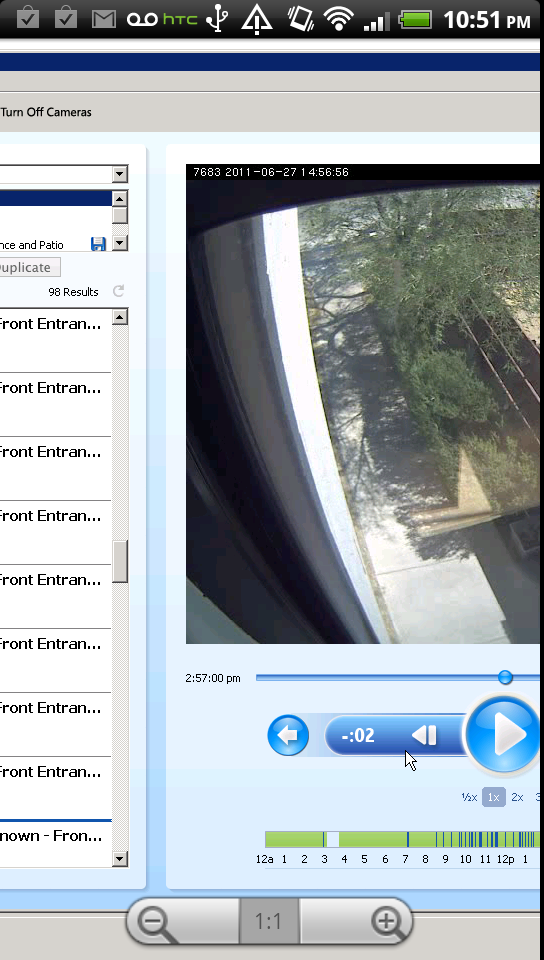
The other mode of operation is essentially 1:1 rendering - you end up with black surrounding the display, just like you do with apps on Honeycomb that don’t properly handle the radically larger display canvas. Take speedtest.net for example, one of my... ok I’ll admit it, my fourth most frequent application. Black bars around it.
I’m told by a number of sources that the next generation of Android tablets will have upwards of 328 ppi displays, so the time for Android developers to get this down pat is right now. 320 ppi is even there in the Android developer guidelines now, which seems to make QSXGA tablets a certainty.
Even first-party Android applications have some work to do. I’ve noticed that badges, icons, and previews in the Android market are noticeably (and at times smearily) upscaled. That’s to say nothing about how bad the application screenshot thumbnails have always look, which is even more exacerbated.
Anyhow I digress. Almost without exception, the extra PPI afforded by having a qHD display has spoiled me to the point where graphical elements now look cartoonishly huge on a similarly sized WVGA display. It’s incredibly apparent when looking at webpages zoomed all the way out - that extra resolution now makes text razor sharp and readable.
You can also really tell the development cycle for devices now. The iPhone 4 really catalyzed this high PPI craze on mobile, with its 330 PPI display. While qHD at 4.3” isn’t quite that high, 256 PPI isn’t anything to sneeze at either. It’s readily apparent to me that qHD is the Android handset maker’s answer to the retina display, and that answer has come almost a full year later. I spoke with HTC when we previewed the EVO 3D and Sensation about their development cycle, and they told me anywhere between 12 to 18 months is typical, from speccing out a phone, to development board, to reference hardware, shopping that around to carriers, to finally having a phone on store shelves. Given the time it took for us to start seeing qHD, 12 to 18 months seems about right.
The other part of the display story is outdoor viewing. Super AMOLED Plus has largely caught up to LCD’s outdoor readability (until overheat protection comes in and kills a quarter of the brightness, that is). In that regard, I consider the Sensation’s S-LCD panel and Samsung’s Super AMOLED Plus about equally matched. The Sensation could be better with a bit more backlight oomph and a better front glass AR coating. Honestly outdoor display quality remains less than stellar for everyone, especially in direct sunlight.
The Sensation includes lit capacitive Android buttons. You can tell the latest generation HTC phones apart from the last refresh based on the style of these buttons. The new ones are much more contemporary and modern looking. They’re sensitive but not prone to errant taps. I think the age of frustrating capacitive Android buttons is thankfully behind us.
There’s one final thing under the display category which is Mobile High definition Link support, or MHL. MHL is essentially an interface allowing up to 1080p video with HDCP and 8 channel audio out over USB. MHL equipped TVs won’t be available for some time, but in the meantime you can use an MHL to HDMI adapter and output to current displays. The Sensation is one of a small list (HTC Flyer, Galaxy S 2, and Samsung Infuse) of devices that include MHL support instead of a second micro-HDMI port.
I attached a dongle to the Sensation and found that MHL indeed does work. Unfortunately, the display size seems limited to 720p at present, so display side upscaling is required to fill the displays over 720p.
At present, the Sensation simply mirrors display output over MHL and rotates between portrait and landscape appropriately, though portrait is a bit disappointing since those 960 lines get compressed into a 720 pixel tall frame. It does work, however.


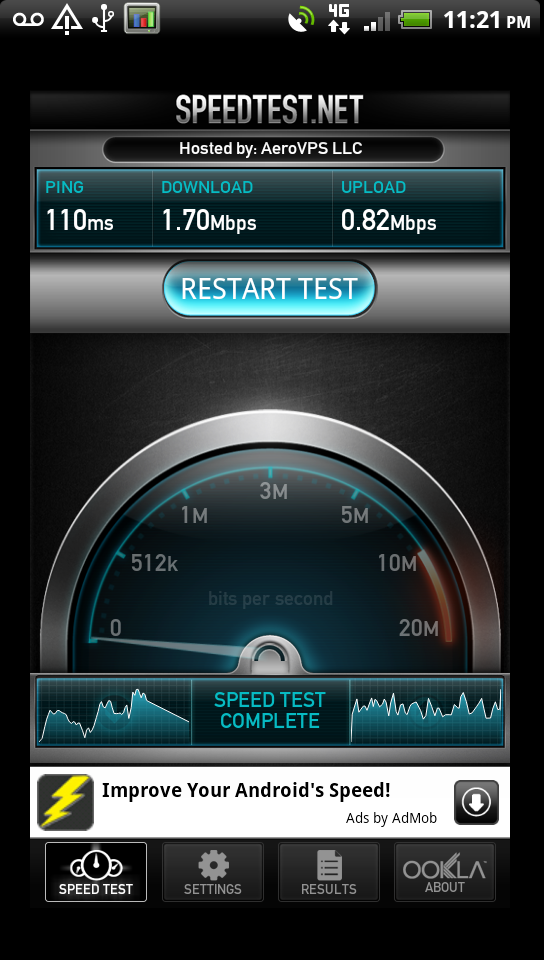







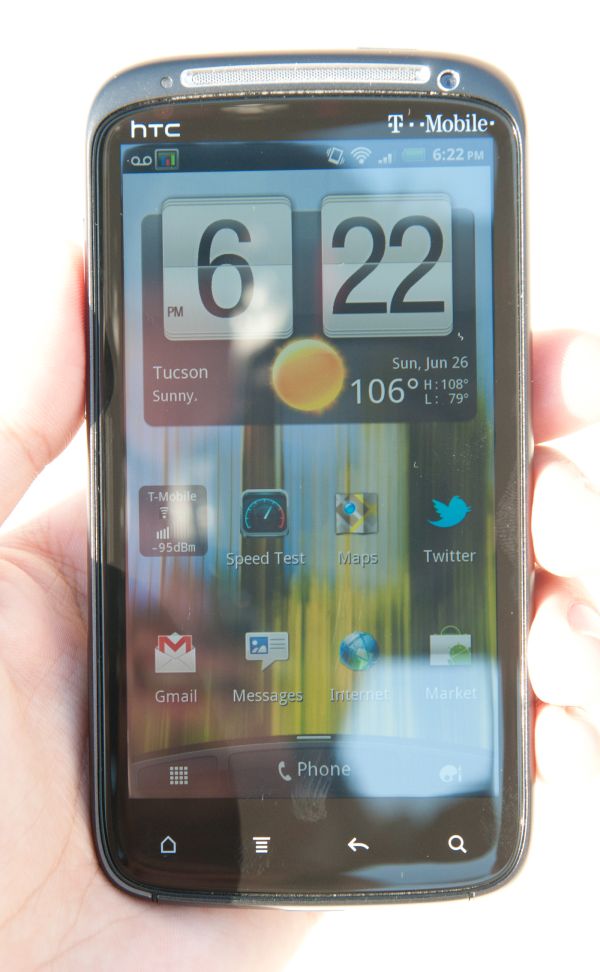
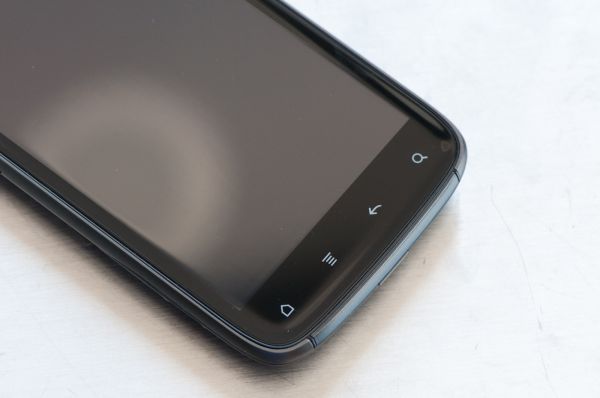
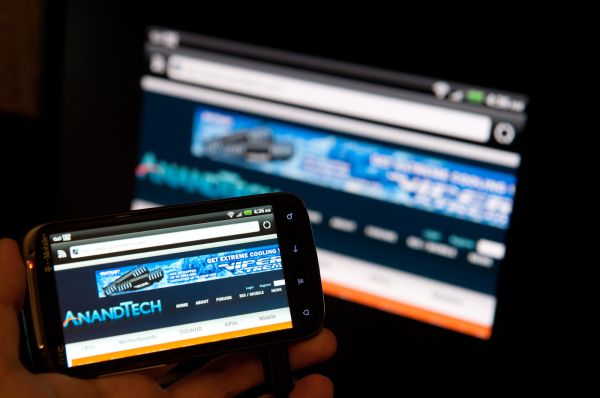
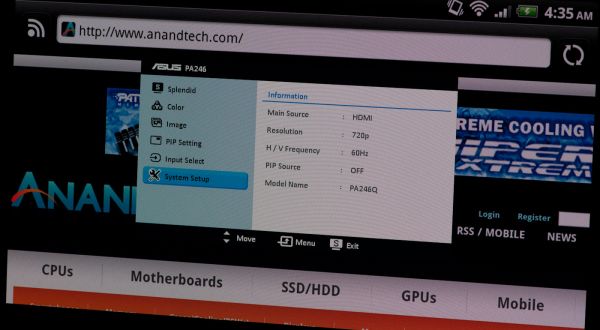








107 Comments
View All Comments
Brian Klug - Friday, July 1, 2011 - link
We're still waiting for an SGS2, hopefully we will get one soon from Samsung USA and be able to compare it in its final form.Take care,
Brian
sam46 - Friday, July 1, 2011 - link
brian,this is one of the few reviews which have praised sensation.but in my view your review is the best.
i am saying this because i believe that unlike other reviewers you not only test mobile phones in your lab but also use them as in daytoday life as a normal user.this gives a better impression of the devices which you review.
many reviewers have given more praises to sgs2 than sensation.they have based their views with the limited time which they had with the devices that too in their testing labs.but i believe that in real world usage sensation makes more sense than sgs2.and this has happened before with their older brothers that is desire and sgs.the reviewers had given more praises to the sgs but the actual users prefered desire over sgs.
though samsung devices looks great on paper,users get frustated with their handsets.
apart from htc in my view hp makes better handsets.lately they are catching up with the hardware but their design sucks.for example take pre3,may be its design makes more sense while handling and using it,but its looks are not good enough to make a good impression.now that they are putting single core1.4ghz processor in pre3,but still they are behind the competition of dualcores.but i do believe that pre3 will give a tough competition to all the dual core phones in terms of speed and performance because of a very light os that is the webos. webos is unarguably the best os out there which is slick and fast,easy to use interface,better management of memory,provides true multitasking,provides a great
feature like just type, and a best notification system.webos is very very light when compare to ios and android,so i think it doesnt need a dual core processor and 1gb of ram.it can perform better than ios and android even with a single core processor and 512mb ram.but hp needs to work on better designs to give a better impression of their devices.
by the way,congratulations brian for this great article.pls tell me what do you think of the observations i made above.
StormyParis - Friday, July 1, 2011 - link
You need to be specific: what hidden drawbacks do Samsung's phones have ? and what hidden qualities, HTC's ?Disclaimer: my current HTC HD2 is the first phone I'm happy with in ages. I had junk from Motorola, LG, and Nokia before that had serious design flaws, plenty of bugs, bad support... or rather, all of the above. My HTC just worked from day one, now it's started a second life under CM7, and I'm very happy with it 2 yrs on.
I was looking foward to buying a Sensation. But the lighter weight, on the whole, better screen, and better moddability f the GS2 are on the verge of convincing me to buy that, instead.
sam46 - Friday, July 1, 2011 - link
Read the review of droid charge by brian klug.He clearly mentioned that samoled+ has some serious problems such as overheating,yellowish tint and oversaturated colours.It is the slimmest smartphone in the world,but according to many users sensation is better to handle.Due to its wait and built quality it feels solid in the hand.And also remember that sgs2 is made of plastic.To know what drawbacks samsung phones have you need to do some googling.Just search for
defects of sgs and sgs2.
bigboxes - Friday, July 1, 2011 - link
Please capitalize your sentences. It was quite the chore trying to read your post. If you want to be taken seriously you need to remember to correctly use those writing rules you learned in school.sam46 - Friday, July 1, 2011 - link
sorry,i am from a non english speaking country.despite that i can write pretty good english,isn't it?SimKill - Monday, July 4, 2011 - link
Do you still not capitalize stuff in your language? I'm a non-native English speaker too, and my language doesn't even have capital and small letters. I still make an effort to write well so that I can convey my message as clearly as possible.sam46 - Monday, July 4, 2011 - link
I will :)Speed3mon - Sunday, July 3, 2011 - link
bigboxes... gAyVisual - Friday, July 1, 2011 - link
Wait, what? Having white appear as red is accurate color now?BTW the Galaxy S II gives users a few choices of color calibration even with stock FW. And just wait and see what the hacked ones do...